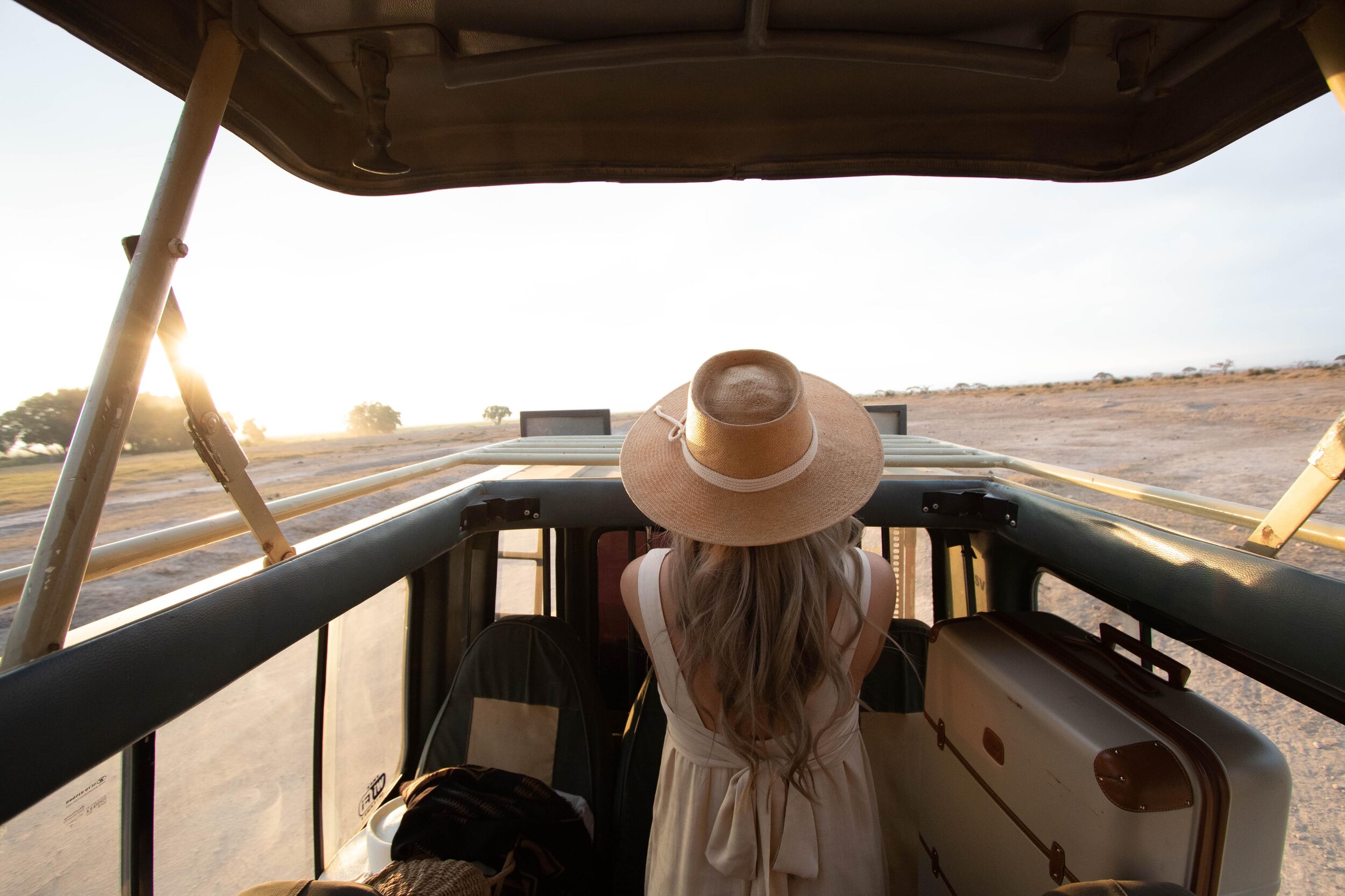Located on the rugged East African coastline, the country of Tanzania is the largest in East Africa and is home to some of the most spectacular wildlife on the planet. Due to its vast wilderness areas, including the famous Serengeti National Park and Kilimanjaro National Park (which holds Africa’s highest peak, Mt. Kilimanjaro), Tanzania has become one of the world’s top safari destinations, drawing in thousands of adventurers each year. The Serengeti, which, in the Masai language means “Endless Plains,” extends over 12,000 square miles into Southern Kenya (where it is known as the Masai Mara) and has over 70 large mammal and over 500 bird species! In fact, it is one of the best-known places in the world to see the “big five:” lions, rhinos, elephants, buffalo, and leopards. Yet, with so much to see and nearly endless safari opportunities, when is the best time to travel to Tanzania? Continue reading below to find out when you should go!
Late December-February: Wildebeest Calving Season
Late December, January, and February provide a special and exciting experience for tourists who travel to the well-known Serengeti National Park. The first months of the year are the wildebeests’ calving season, which is a fantastic time not only to see the birth of newborn calves in the wild, but also to see some spectacular, action-packed hunting scenes, as lions, cheetahs, and other big cats descend upon the herd. January and February, especially, provide a high-time to see the most sought-out animals, as well as some of the most intense and action-filled safari experiences!
March-May: Low Season
March and April are peak wet season months; yet, before you let this deter you from traveling during those months, remember that the increased rains mean fewer crowds! Not only are tours cheaper during this time of the year, but the national parks are almost empty, providing travelers with a much more intimate and private wildlife experience. Imagine seeing lions and elephants amidst the backdrop of beautiful, vast landscapes without anyone else around! Safaris during these months are sure to be unforgettable!
June-August: The Great Migration
Every year, wildebeests and other grazers partake in a huge annual migration across Northern Tanzania and Kenya. This migration is a spectacular event, as giant herds of wildebeests, gazelles, and zebras cross rushing rivers and great plains in search of greener pastures. The spectacle is too exciting and incredible to miss, and it should be high on the safari traveler’s bucket list! June and July are also dry season months, meaning beautiful weather and more chances to see a variety of animal species as they flock toward the water holes!
September-early November: Dry Season Wildlife Watching
September and October are prime-time to go on safari in Tanzania! After the excitement of the Great Migration, the tourist crowds begin to clear, allowing for less-crowded tours but the same beautiful, warm, and dry weather of July and August! If you want to spot some great animals without the crowds, September and October are the time to go! The “short rains” begin in the middle of November, but it is still a pleasant time to explore the country before the high holiday season that begins in December!
Tanzania has much to offer travelers in every season. The incredible wild animals and idyllic landscapes, as well as the diversely rich culture of the cities and villages, are guaranteed to provide you with an experience that you will want to relive over and over again!
Written by Grace Klopp, connect with her on Instagram






















📍 Tanzania
7 days from $3,800
Limited to 16 travelers
See Details >
50% off with code: “50OFF”
For select travel dates until December 2025
Offer expires March 31st, 2025